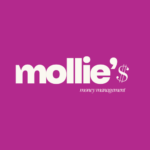
ABCs of Investing
- 401k
Ready to take your investing knowledge to the next level? Dive deeper into these key terms and start making smarter investment decisions today! Bookmark this glossary, share it with fellow investors, and stay informed on the language that drives the market. Let’s get investing with confidence!
Asset Allocation: Dividing your investments among different asset classes (stocks, bonds, cash) to balance risk and reward.
Annual Percentage Yield (APY): The total interest earned on an investment or savings over a year, including compounding.
Budget: A plan for managing income and expenses to save for financial goals.
Bond: A fixed-income investment where you lend money to an entity (government or corporation) in exchange for regular interest payments.
Compound Interest: Interest calculated on the initial principal and on accumulated interest from previous periods.
Certificate of Deposit (CD): A savings product with a fixed interest rate and maturity date.
Diversification: Spreading investments across various assets to reduce risk.
Dividend: A portion of a company’s earnings paid to shareholders.
Emergency Fund: Savings set aside to cover unexpected expenses, typically 3–6 months of living costs.
Exchange-Traded Fund (ETF): A type of investment fund traded on stock exchanges, combining the diversification of mutual funds with stock-like liquidity.
Expense Ratio: A fee charged by mutual funds or ETFs for managing the fund.
Financial Goal: A specific target for saving or investing, such as buying a house or retiring comfortably.
Fixed Income: Investments that provide regular interest payments, like bonds.
Growth Stock: Shares in a company expected to grow faster than average, often reinvesting profits rather than paying dividends.
Gross Income: Total earnings before taxes and deductions.
High-Yield Savings Account (HYSA): A savings account offering a higher interest rate than traditional savings accounts.
Hedge Fund: An alternative investment using various strategies to achieve high returns, often accessible only to accredited investors.
Index Fund: A fund designed to track the performance of a specific market index, such as the S&P 500.
Inflation: The rate at which the general level of prices for goods and services rises, eroding purchasing power.
Joint Account: A bank or investment account shared by two or more individuals.
Junk Bond: A high-risk, high-yield bond issued by companies with lower credit ratings.
K-1 Form: A tax document for reporting income from partnerships, trusts, or estates.
Keogh Plan: A retirement savings plan for self-employed individuals or small business owners.
Liquidity: The ease with which an asset can be converted into cash without losing value.
Zero-Coupon Bond: A bond sold at a discount that doesn’t pay periodic interest but matures at its face value.
Click here to schedule your free consultation if you’d like to dive into some key terms together further.
Related Posts
Ready to Level Up
Your Finances?
Book a consultation now and let's kickstart your journey to financial success!



